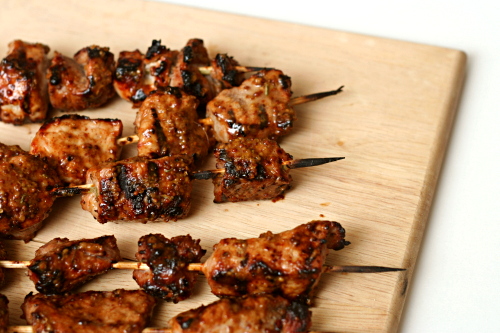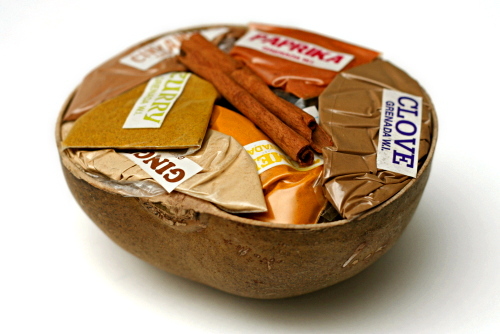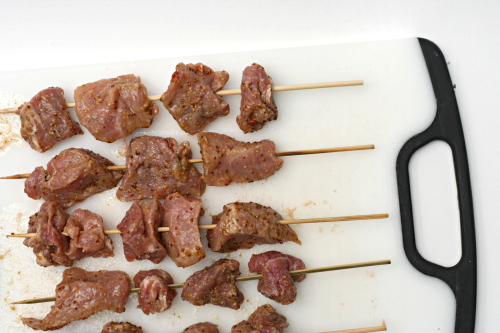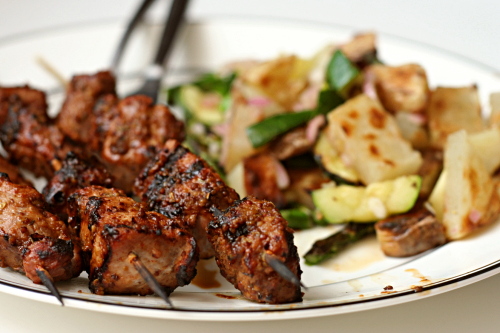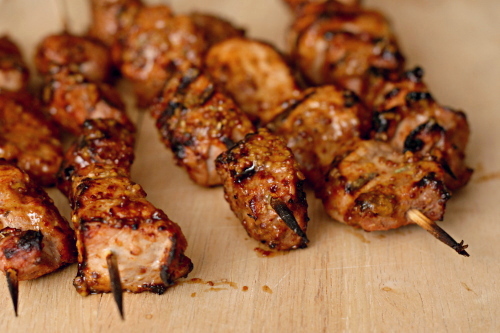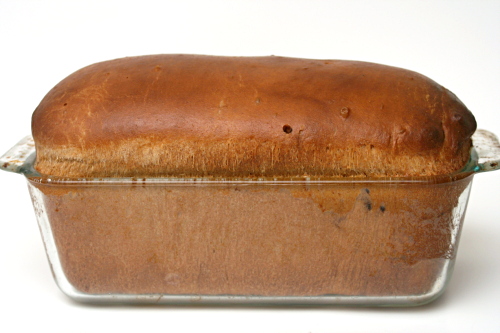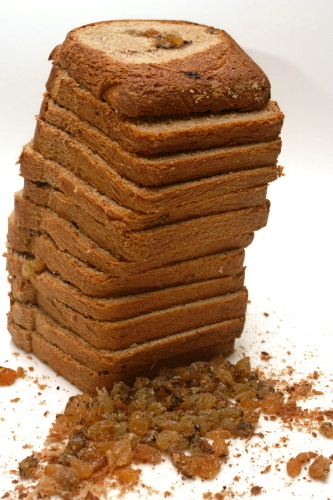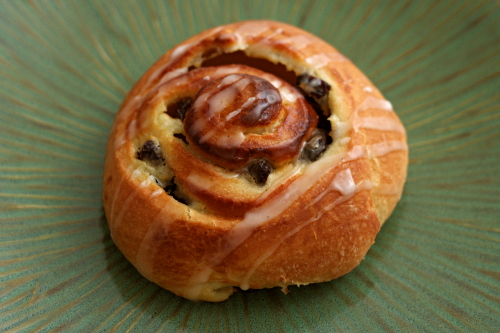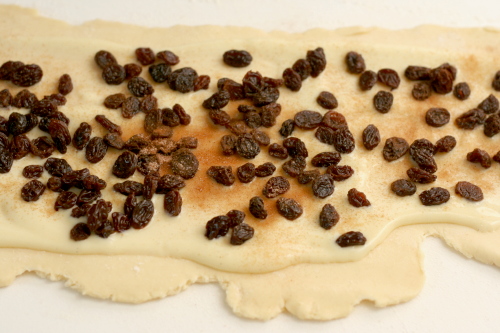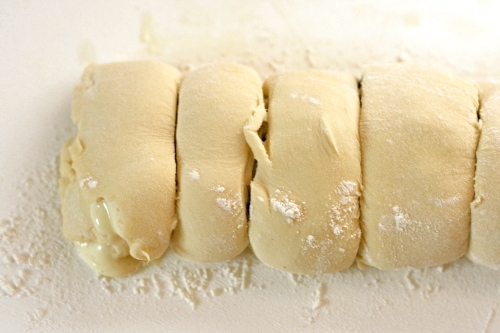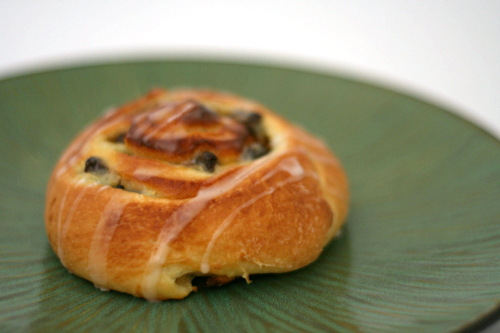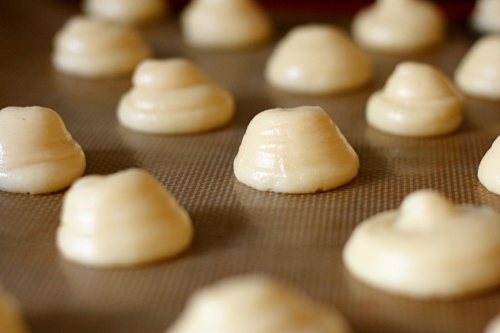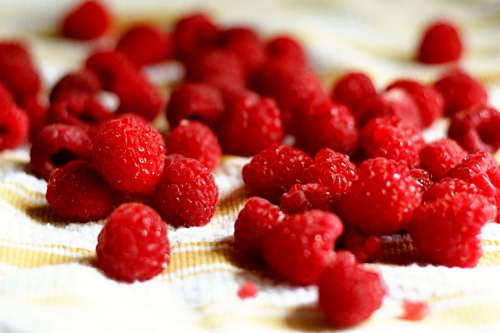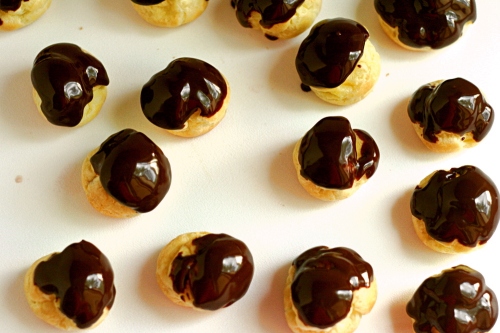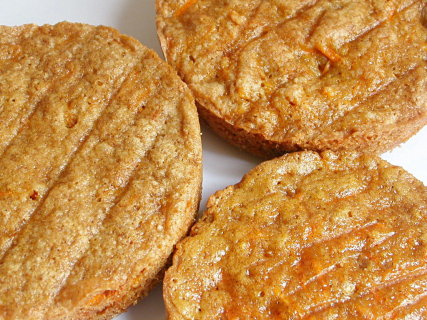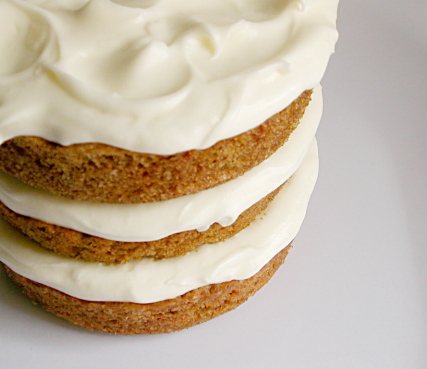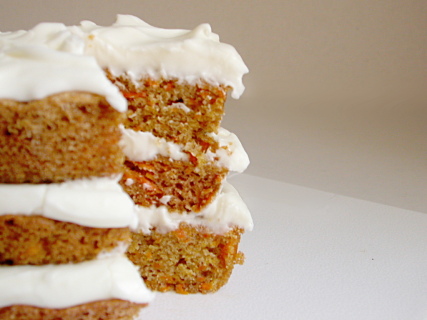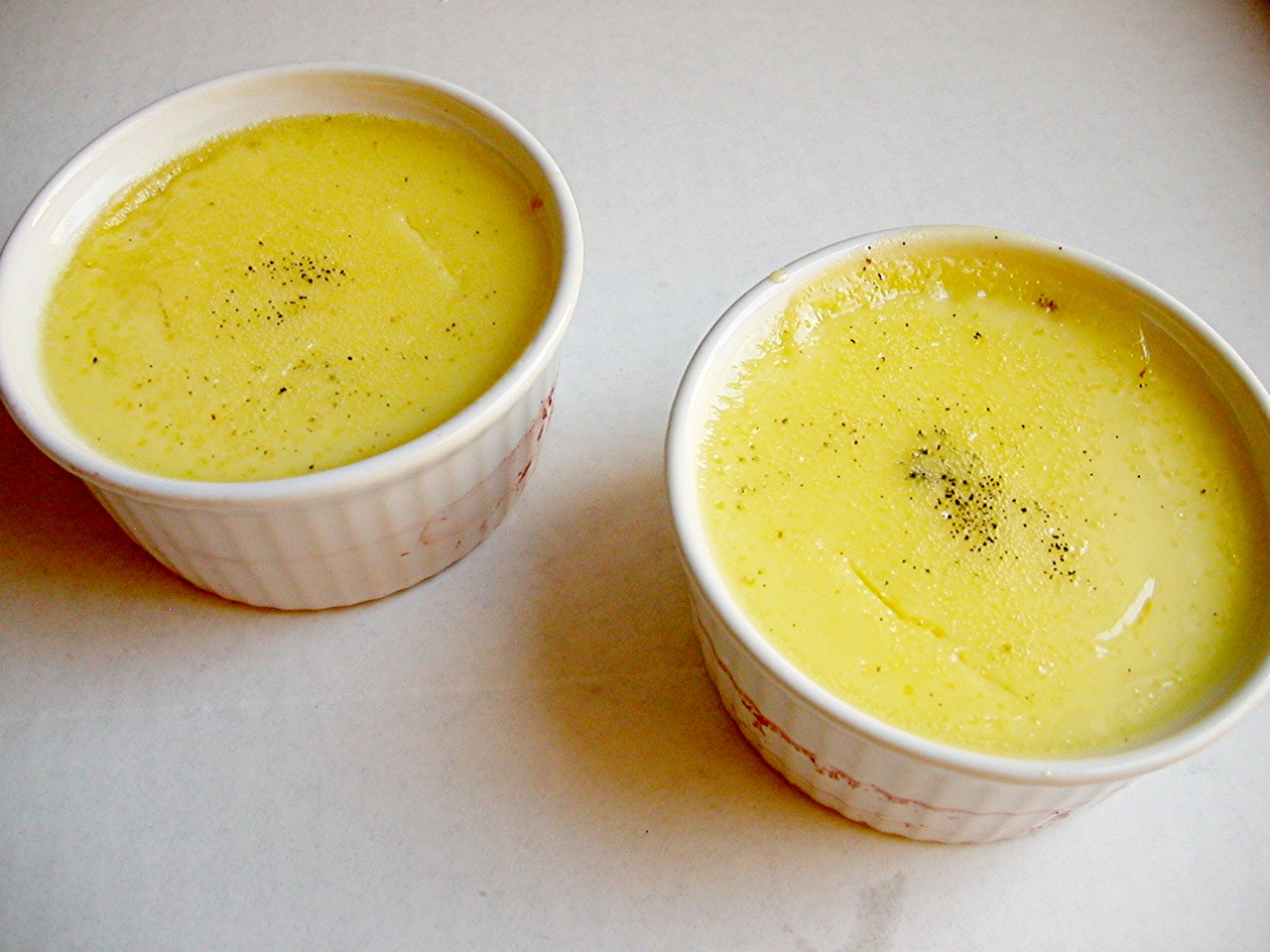My parents went to Bolivia, Hungary, Hawaii, New Zealand, Romania, Costa Rica, China, Panama, and Peru, and all I got was these lousy spices. Okay, actually, they’re pretty nice spices, especially the saffron (and three mystery spices) my mom just brought back from the Istanbul spice market. Besides, when your parents go on 2-3 international trips per year, you don’t need a cheap T-shirt from each place. Spices, tea, and the occasional funky hat for Dave are perfect.
And it was a good thing I had a random set of spices from various foreign countries, because I was out of my normal paprika supply, and it would have been very very sad to miss out on this recipe. My gosh, this was good. Mustardy, garlicky, vinegary, herby – so many complimentary flavors.
Even better, I stumbled upon this weird grilled potato and vegetable salad to go with it that I was expecting to be just edible, and what do you know, it ended up being fantastic. In all, another Saturday night dinner that knocked my socks off. That’s happened more and more since we got the grill, and I am not complaining one bit.
One year ago: Seafood Lasagna
Two years ago: Vanilla Ice Cream
Printer Friendly Recipe
Garlic-Mustard Glaze (adapted from Bobby Flay via Smitten Kitchen)
Makes about ¾ cup of glaze, or enough to cover and baste 2 pounds of meat
I used pork, but Deb used chicken (I think) and Bobby Flay uses beef tenderloin. Just be sure you choose a cut that is appropriate for fast cooking. Your cooking time will depend on the type of meat you use.
¼ cup whole grain mustard
2 tablespoons Dijon mustard
4 cloves garlic, crushed
2 tablespoons white wine vinegar
1 tablespoon low-sodium soy sauce
1 tablespoon honey
1 tablespoon finely chopped fresh rosemary leaves
2 teaspoons Spanish paprika
¼ teaspoon kosher salt
¼ teaspoon freshly ground black pepper
2 pounds meat, cubed
1. In a small bowl, whisk together all of the ingredients except the meat. Reserve ¼ cup of the glaze; add the meat to the remaining glaze, cover, and refrigerate for at least 30 minutes and up to 4 hours before using.
2. Prepare a medium-hot fire. Grill the meat, turning three times and brushing with the reserved glaze, for 4 to 8 minutes, until golden brown, slightly charred, and cooked to your desired level of doneness. Let the meat rest for 5 minutes before serving.
